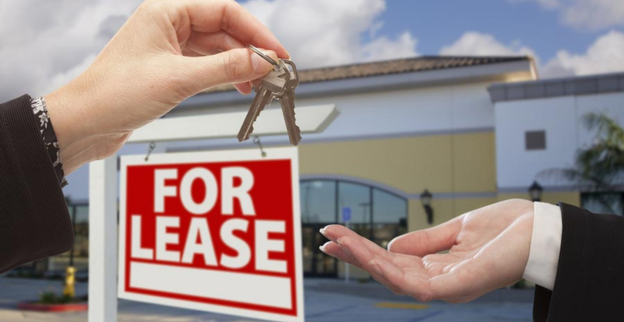The Manhattan Property Management Market is one of the fastest-growing and leading markets in New York City. It is dynamic and unstable, and property prices have regularly increased or decreased. In the first quarter of 2024, the rental market experienced a downslope of 4%, but suddenly, rent prices increased by 1.8%.
In such a scenario, finding tenants for your property, managing the property, and generating profit from it becomes problematic. But, this guide can be your way to cope with these problems and find suitable property management services in Manhattan. First, let us look at some of the challenges that one has to encounter while managing properties in Manhattan.
Challenges Faced by an Individual in Managing the Property in Manhattan

One can face several challenges while managing Properties in Manhattan. Some of them are listed below:
1. Compliance
One of the biggest challenges in managing properties in Manhattan is ensuring that you comply with all the rules and regulations. You need to consider various aspects like building codes, zoning codes, and laws like the New York State Condominium Act.
2. High Competition
The demand for properties in Manhattan is comparatively high. At present, there is a 23% rise in demand for property since January 2024. It makes the situation more challenging and competitive.
3. Maintenance and Repair
Every property requires regular maintenance to be in good condition. It is quite challenging for the landlord to oversee the property regularly and check for leakages and repairs.
4. Local Laws
Several local laws in NY need to be followed. An individual needs to comply with all the local laws related to property management, such as local law 126 (amend the administrative code) and local law 24 (amend the NYC Building code).
How to Find the Best Manhattan Property Management Services?

A property management company is an entity that manages the property and provides services according to the preferences and needs of the landlords.
It carries out functions such as rent collection, tenant screening, managing the property, and handling property-related disputes and taxes. Furthermore, it manages every type of property, whether it is residential apartments, commercial buildings, or industrial units.
Let’s examine the benefits of a property management company to understand why you need one.
The Benefits of a Manhattan Property Management Company

A Manhattan property management company offers various Benefits to Landlords. Some of them are:
1. Communication
The property management company helps the landlord and tenant to build a mutual understanding by communicating all the grievances and ways to redress them.
2. Repair and Maintenance
The property management company ensures that all issues and grievances related to the repair and maintenance of the property are addressed. Sometimes, the company also conducts regular maintenance checkups to check the safety standards and hygiene of the property.
3. Handling Lease Agreements and Negotiations
Making a lease agreement that clearly states every term and condition and complies with all legal requirements is complex. However, property management companies undertake these tasks on behalf of the landlord and create an agreement that clearly states everything. They also help in negotiating the terms and conditions in favor of the landlord to provide the maximum benefits to them.
4. Routine Inspections
The property management companies undertake routine inspections to ensure that the property is taken care of, is in a good state, and the tenant is fulfilling all their obligations. Additionally, if any issue is found, the companies try to fix it as soon as possible to avoid huge damages or losses.
5. Accounting Services
Managing the accounts is one of the most complex tasks. It involves maintaining all financial documents, handling rent collection, and handling all income/expense reports or invoice/payment receipts. However, a property management company effectively handles all these tasks on behalf of the landlord and prepares monthly and annual reports.
6. Tenants Screening
The property management company undertakes the task of finding the right tenants for the landlords. It undergoes the tenant screening process, conducts background checks, and ensures that the tenant is financially stable. Moreover, if there is any vacancy, it is the responsibility of the property management company to find the next potential tenant.
7. Legal Compliance
Managing a property requires complying with several laws and regulations, zoning laws, and building codes. Moreover, a bad tenant can lead to several legal problems related to lease agreements or rent contracts. A property management company takes care of all these legal issues and ensures that all property-related laws are complied with.
Take the First Step Towards Finding the Right Manhattan Property Management Services

It is quite challenging to manage a property in an area like Manhattan, where prices are high, laws are abundant, and tenants are scattered everywhere. To manage a property, one needs a thorough understanding of the state and local laws, market dynamics, and demand and supply analysis. Besides this, one needs to regularly check for leakages, repairs, or other issues and find solutions to resolve them.
However, by partnering with a property management company like Citadel Property Management Corp., one can eliminate these challenges and ensure that the property is being taken care of. This will also shift the burden of Finding Tenants and handling their grievances from the landlord to the management company, making the collaboration a wise decision.
Frequently Asked Questions
1. What is the average rent for a retail outlet in Manhattan?
The average rent for a retail outlet in Manhattan ranges between $82.74 and $103.42.
2. What is the average selling price of condos and co-ops in Manhattan?
The average selling price was $2,382,039 for a condo and $1,351,735 for a co-op in the first quarter of 2024.
3. Is it a good decision to invest in properties situated in Manhattan?
Yes, it is a good decision to invest in properties in Manhattan because it is a very highly demanding and profitable area. Moreover, there are possibilities that the value of properties will be appreciated shortly.
4. Is Manhattan an expensive area to live in?
Yes, Manhattan is an expensive area to live in compared to other areas in New York.
5. What is the average selling price for a commercial property in Manhattan?
The average selling price of a commercial property in Manhattan is $605 per sq. ft.








































